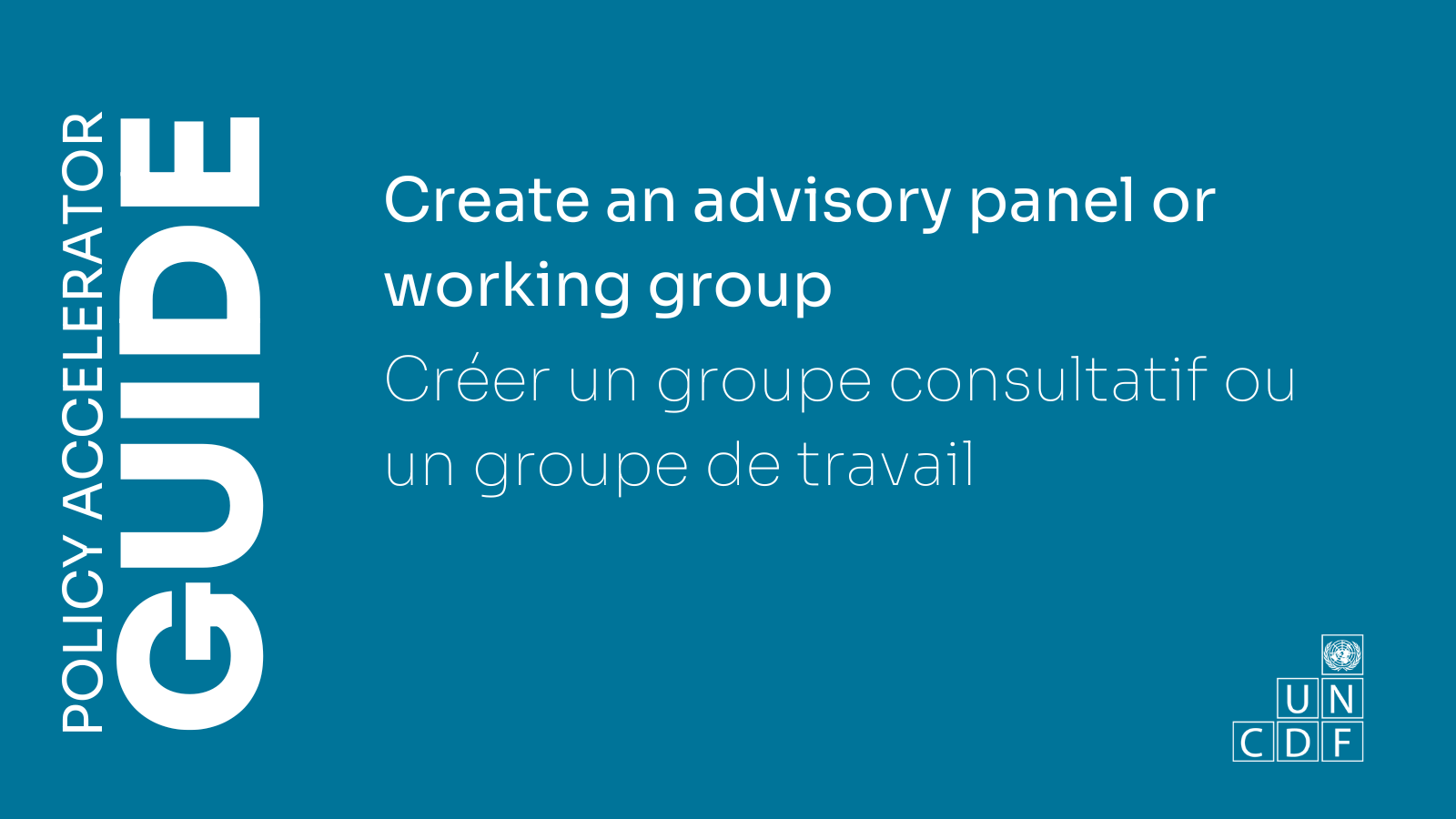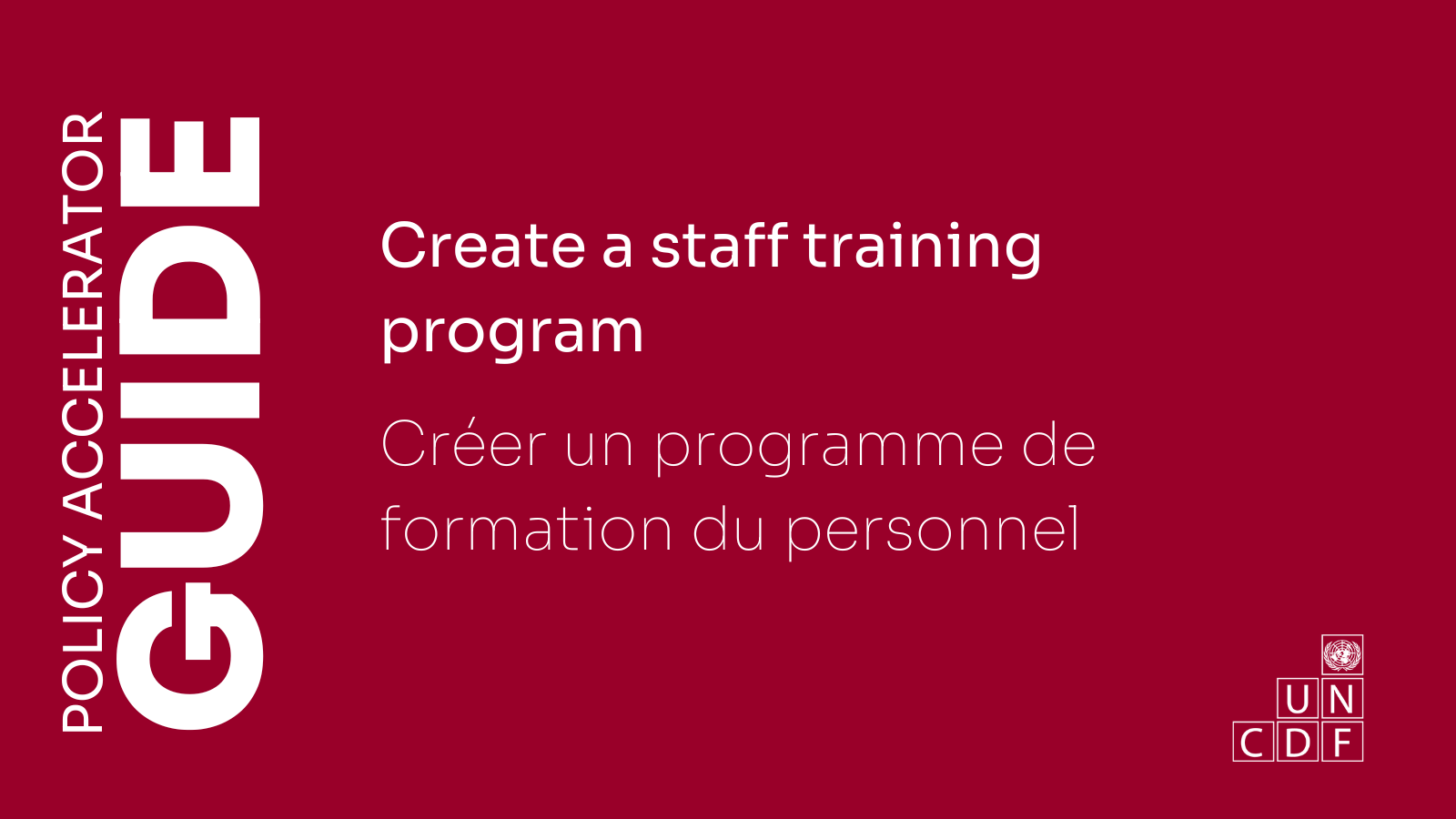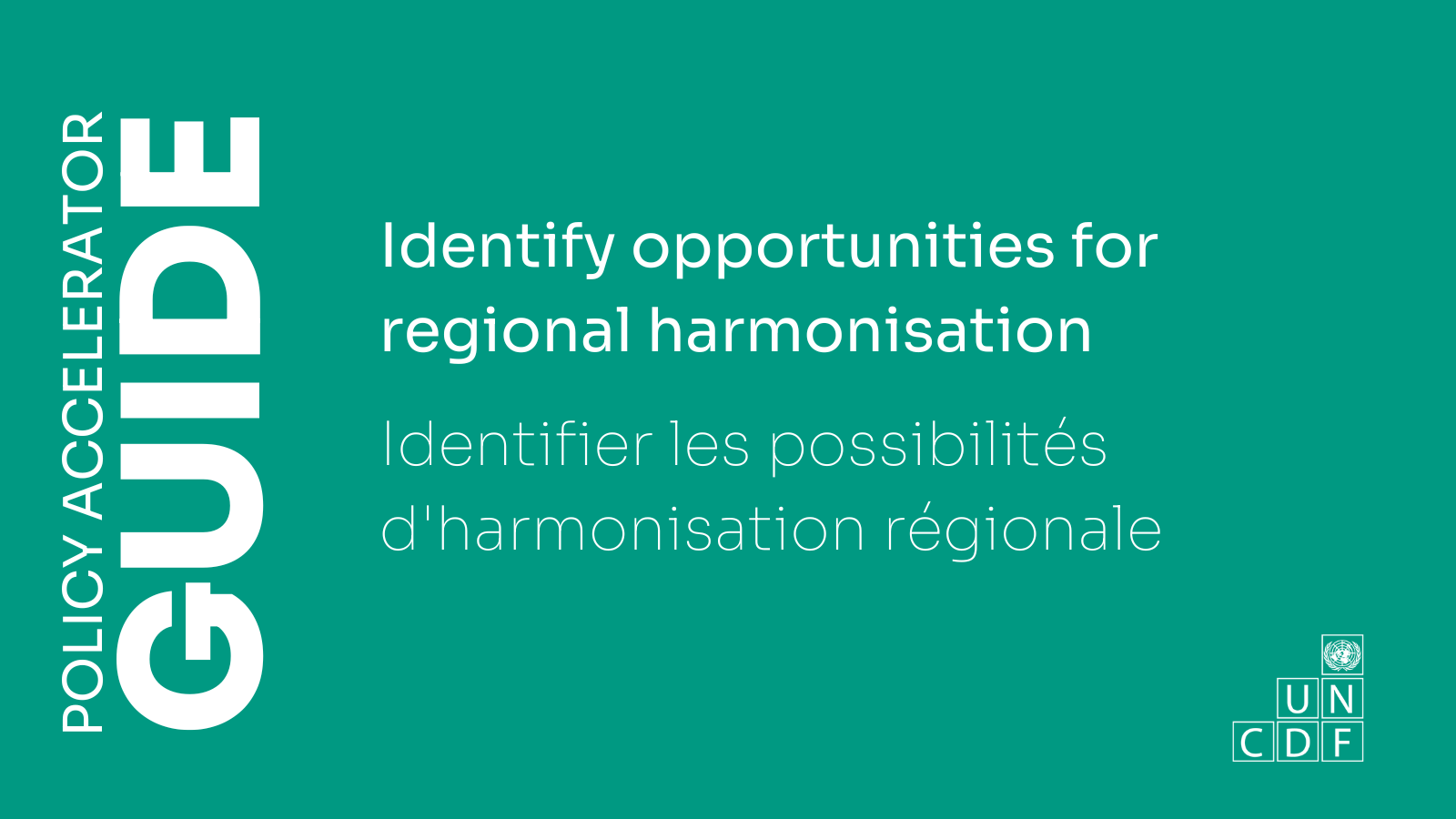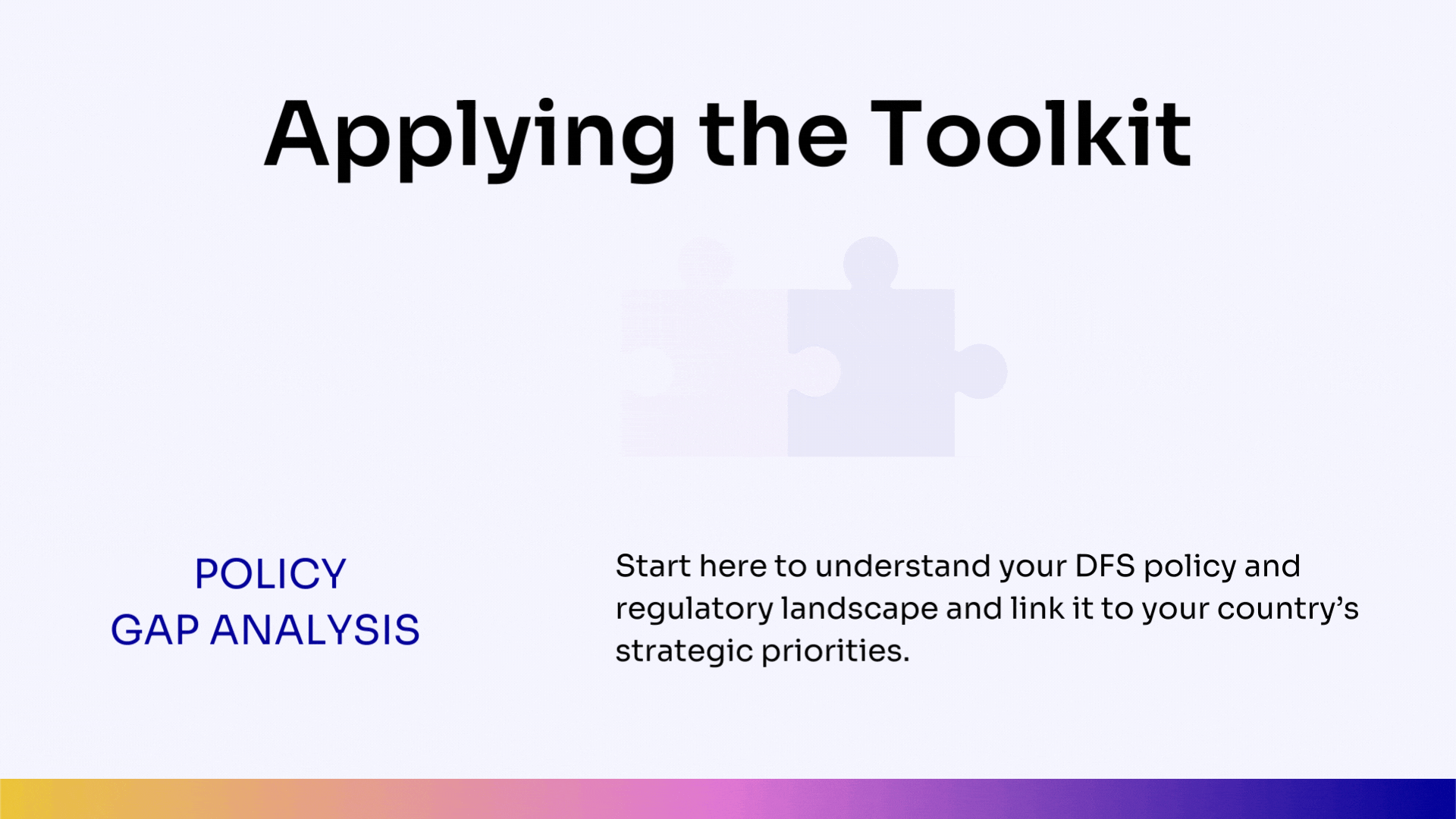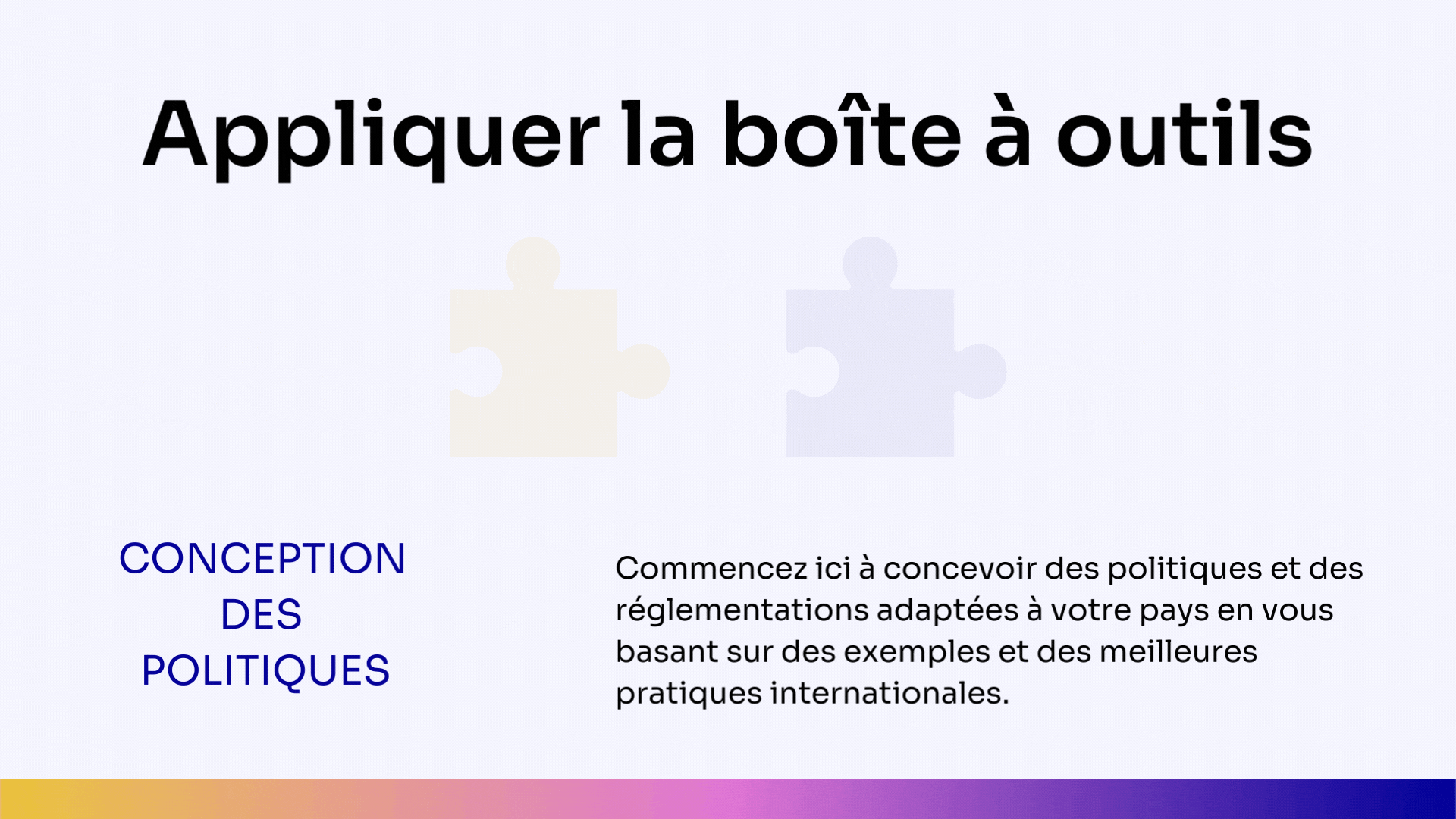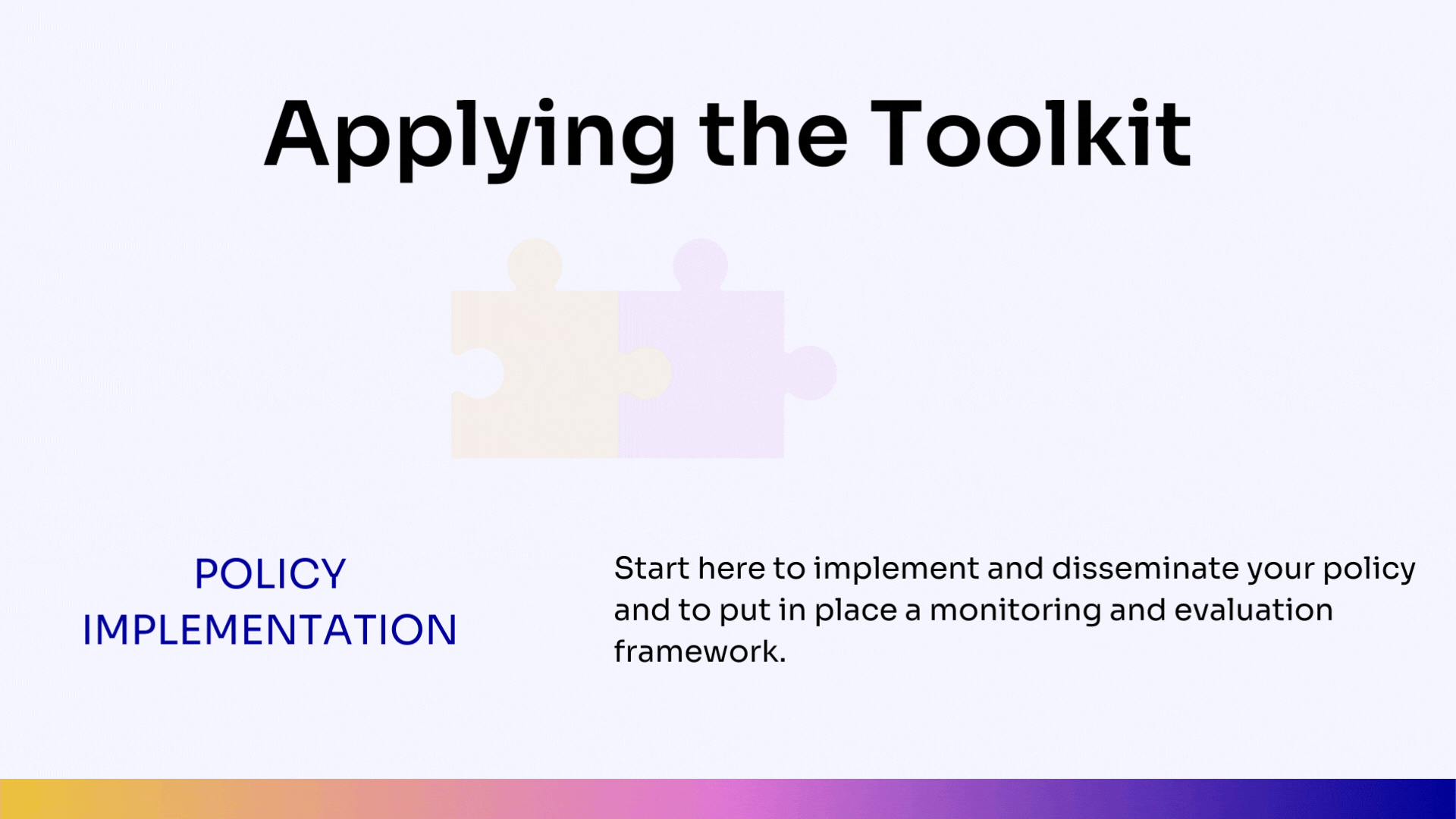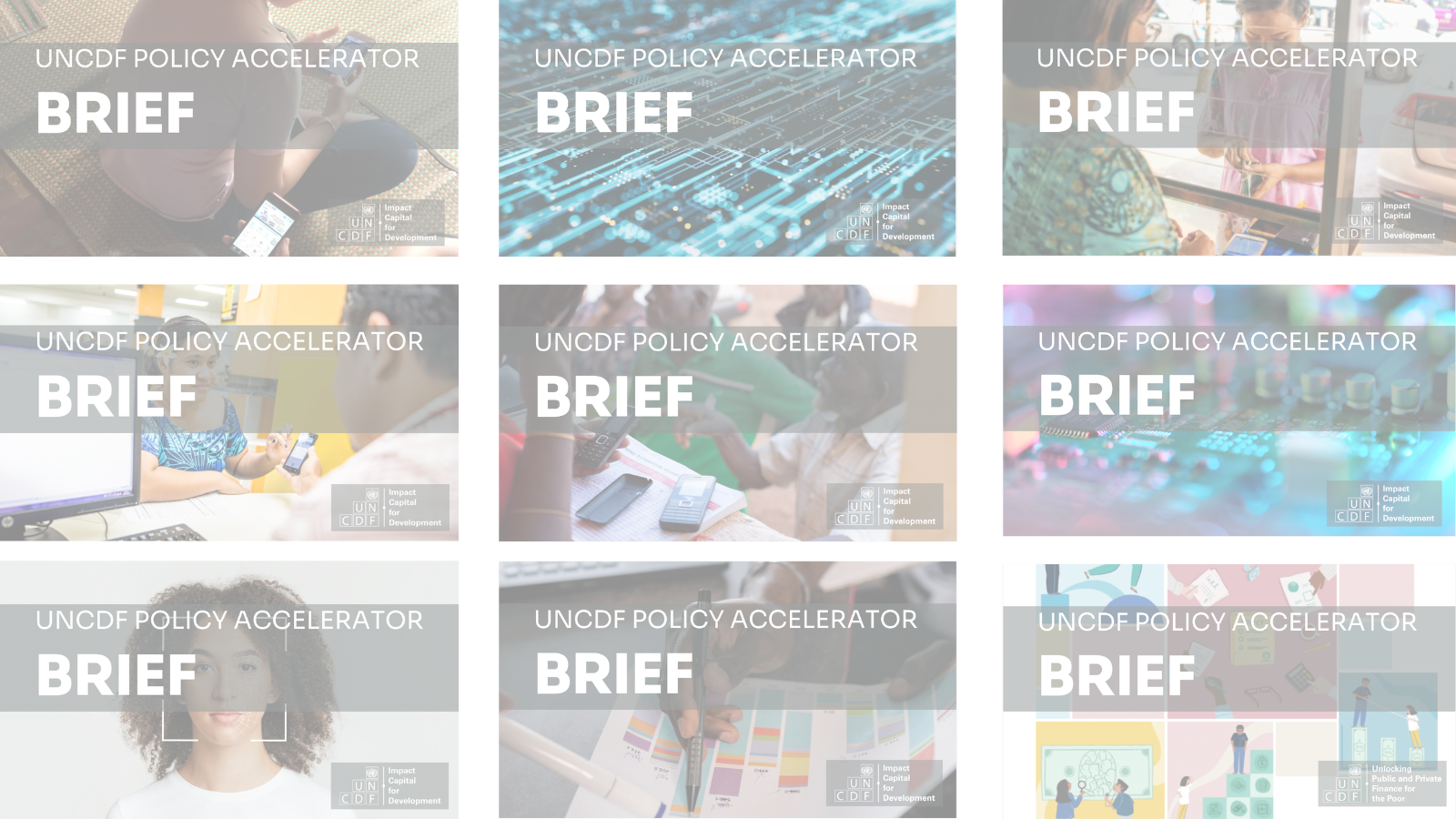UNCDF Policy Accelerator Methodology
Below you will find a series of guides that make up the Policy Advisory Toolkit. Apply these to the three phases of policymaking — policy gap analysis, policy design and policy implementation — while working toward investment enabling inclusive Digital Financial Services.
Each guide reflects our systems-focused approach, equipping governments with the tools to unlock inclusive growth through sound policy and market governance.
Watch an overview of the Toolkit in English.
Watch an overview of the Toolkit in French.
Phase 1: Policy Gap Analysis
We recommend that you first conduct a policy gap analysis to better understand how your digital inclusion policy and regulatory landscape relates to your country’s strategic priorities. You can:
Start by using our guides, Identify policy anchors for digital economic inclusion and Identify opportunities for regional harmonisation, to determine the government’s national and regional priorities and commitments that you may leverage as “policy anchors” to further your conversation on digital inclusion.
Next, use our Assess your current market and regulatory landscape guide to identify policy barriers and opportunities for digital inclusion in your market. Use our Gender-disaggregated Data Mapping Tool to assess the policy framework around collection of data and the maturity of internal policies directed towards women's financial inclusion. This will provide you with evidence to ascertain how the barriers identified are impacting men and women differently, and will equip your gender intentional policy solutions in Phase 2.
Then, use our Consult with stakeholders and Create an advisory panel or working group guides to engage with relevant stakeholders to understand the challenges from their perspective.
At any point during this phase, use our Create a staff training program guide to design a plan to help policymakers strengthen their ability to analyze relevant policy gaps.
Phase 2: Policy Design
Once you have conducted your Policy Gap Analysis, you are ready to design policies and regulations curated for your country using global examples and best practice. You can:
Start by referring to our Learn from global and country experience guide to learn about global standards, see how other countries have addressed related policy challenges, and develop a preliminary set of policy options tailored to your market context.
Next, analyze and shortlist your policy options using our Select viable policy options guide. If you have limited or no gender disaggregated data, consult our Gender disaggregated Data Mapping Tool to implement steps to improve your current policies around enhancing collection and management of data.
At any point during this phase, you may use our guide Create an advisory panel or working group to ensure that stakeholder feedback informs policy design; and our Create a staff training program guide to design a targeted plan to help policymakers strengthen their understanding of potential policy solutions.
Guides for Phase 2
Phase 3: Policy Implementation
Once your policy or regulation has been designed and enacted, you will likely shift to implementing and disseminating your policy. You can:
Consult once again with stakeholders to understand any challenges that may arise during implementation, using our guides Consult with stakeholders and/or Create an advisory panel or working group.
For any challenges that you identify, refer to our Learn from global and country experience guide to learn from other countries and global standard-setting bodies to improve and inform policy implementation.
You may also wish to refer to our Create a staff training program guide when developing a plan to support policy implementation and supervision.





